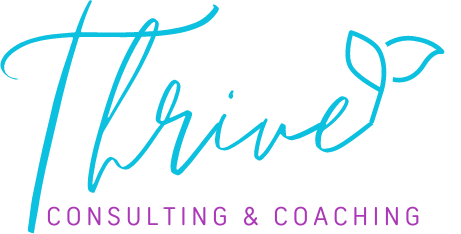A surprising 43% of clinician users consider their original EHR training “less than adequate.” The numbers paint an even more worrying picture – 94.6% of healthcare professionals believe they could do better with their EHR system.
These numbers reveal a major challenge in EHR implementation. Healthcare organizations need a careful, structured approach because system costs range from $15,000 to $70,000 and up depending on your size along with training expenses of $10,000 and greater.
We created this detailed guide to help you implement your EHR system smoothly while keeping patient care as the top priority. You’ll learn how to create a practical implementation plan, build a realistic timeline, prepare your staff, and execute a phased rollout without compromising care quality.
Want to implement your EHR system while maintaining excellent patient care? Let’s explore this together.
Creating Your EHR Implementation Plan with Patient Care in Mind
A successful EHR implementation requires a full picture of your organization’s unique needs and workflows. Your implementation plan should focus on patient care quality, built on a detailed needs assessment [1].
Assessing your practice’s unique patient needs
Patient-centered care must treat the whole patient, not just their medical conditions. Your EHR implementation should include the patient’s priorities, values, and goals in clinical workflows [2]. You should review how your current processes support patient care and find areas where the EHR can improve these interactions [3].
You need to review your practice’s specific requirements for:
- Data sharing capabilities between healthcare providers
- Patient portal functionality for scheduling and communication
- Integration with existing clinical workflows
- Security protocols for protecting patient information [4]
Setting implementation goals that prioritize care continuity
Studies show that better care continuity guides patients toward lower mortality rates, fewer hospital admissions, and lower healthcare costs [5]. You should set clear, measurable objectives using the SMART framework (Specific, Measurable, Attainable, Relevant, Time-bound) [6].
Your implementation goals should target:
- Keeping detailed patient records during transition
- Smooth communication between healthcare providers
- Efficient clinical workflows without compromising care quality
- Supporting patient access to their health information [4]
Identifying potential disruption points in your current workflow
A detailed workflow analysis before implementation helps prevent practice disruption and patient safety problems [3]. Research shows that EHR transitions often face big challenges, with temporary drops in patient throughput nowhere near 50% [7].
You can minimize disruption by analyzing these critical areas:
- Clinical documentation processes
- Patient check-in procedures
- Prescription management systems
- Laboratory and imaging workflows
- Referral management protocols [1]
The leadership and staff need open communication channels both ways. The leadership will understand how implementation affects patient care, and the staff gets clear information about upcoming changes and preparation needs [1].
Note that EHR implementation is an experience, not a destination [1]. When you carefully assess your practice’s needs, set patient-focused goals, and spot potential workflow disruptions early, you build a foundation for successful implementation that keeps high-quality patient care throughout the transition.
Building an EHR Implementation Timeline That Protects Patient Experience
A realistic EHR implementation timeline serves as the life-blood of continuous patient care. Research shows that a complete implementation takes six to eight months from go-live to full adoption [8].
Scheduling implementation activities during low-volume periods
Medical practices should reduce their clinic volume when implementation begins. The patient load needs a 50% reduction in the first two weeks. A 25% reduction follows through weeks three and four [9]. This approach might impact short-term revenue but prevents potential risks from rushed implementation.
Patient disruption can be minimized by:
- System installations and updates happen during off-peak hours
- Training sessions take place when patient numbers are lower
- Data migration runs outside regular clinic hours
Creating buffer zones around critical patient care times
The timeline needs to protect patient care activities. Organizations should set up specific time blocks for:
- Patient’s eye-to-eye contact [9]
- Support staff working next to providers for 5-10 days after implementation [9]
- Extra support time for part-time providers [9]
Developing contingency plans for unexpected delays
System downtime will happen, so detailed contingency planning is vital. Healthcare teams must prepare for both scheduled and unexpected system outages [10]. A strong contingency plan includes:
- Daily data backup protocols [11]
- Multiple internet access points from different providers [11]
- Backup processors with copies of critical files [8]
Healthcare facilities need paper copies of contingency procedures in all clinical units [12]. Practices that choose a phased rollout must maintain dual systems, though this needs extra resources [13].
Fast Pass tools for scheduling appointments and clear provider messaging channels help protect patient experience during implementation [14]. These systems keep patients involved through system changes.
Preparing Your Staff for Change While Maintaining Care Standards
Staff training is the life-blood of successful EHR implementation. The largest longitudinal study shows that well-designed EHR training programs improve healthcare efficiency and patient care quality by a lot [15].
Role-specific training approaches that minimize time away from patients
Staff roles determine customized training programs that optimize learning outcomes. Nurses spend most time learning patient charting, while administrative staff focus on appointment scheduling and invoicing [16]. Each team member learns exactly what they need without wasting time.
Patient care standards stay high during training when you:
- Give physicians paid, protected learning time [17]
- Employ at-the-elbow support instead of traditional lectures
- Add supervised practice sessions with workbook references
Creating super-users who can provide up-to-the-minute support
Super-users bridge the gap between end-users and the EHR project team. They receive thorough system training and extra privileges to help with EHR transitions [17]. Internal facilitators work better than external trainers when providing context-specific support [17].
A successful super-user program needs:
- Early involvement in system design meetings
- Participation in testing phases
- Regular updates on system improvements
- Dedicated time to support peers
Developing quick-reference guides for common patient scenarios
Quick-reference materials boost staff confidence and cut down system-related delays. Practical guides should cover:
- Documentation procedures for routine observations
- Steps to manage patient records
- Common workflow scenarios
- Troubleshooting protocols
Real patient scenarios in training materials help staff grasp practical applications [16]. The core team develops critical thinking and problem-solving skills, which maintains high standards of patient care throughout implementation.
Healthcare organizations that use role-specific training programs among complete support systems see better staff satisfaction and improved patient outcomes [18]. Well-laid-out planning and structured support help practices maintain optimal care standards while switching to new EHR systems.
Executing a Phased EHR Implementation That Preserves Quality Care
A phased EHR implementation approach creates a clear path to system adoption. Organizations that use this method face lower immediate risks compared to the “big bang” approach [19].
Starting with non-critical functions
The prep phase takes about six months. We focused on technical applications and documentation tools [2]. The team should start by implementing these simple functions:
- Digital documentation based on staff priorities
- Configuration choices for all specialties
- Clinical note naming setup
Gradually introducing patient-facing features
The next six months let providers switch to electronic processes at their own speed [2]. This gentle transition shows amazing results. About 80% of providers switched to digital documentation two weeks before required deadlines [2].
The core milestones include:
- Making templates simpler and adjustable
- Automating standard data entry
- Creating policies for copy-paste features
- Regular updates with stakeholders
You retain control with dual systems during critical transitions
Running two systems side by side helps maintain quality care. Research suggests keeping both systems for 60-90 days after the new EHR system starts [20]. This strategy helps in several ways:
Staff can verify billing records and track pending claims [20]. The overlap phase keeps client care running smoothly [21]. Access to old data stays available while teams move to the new platform [21].
Results show a soaring win – 99.7% of 1,451 physicians adopted the system within six months [2]. All the same, organizations should expect temporary slowdowns. Studies show patient throughput might drop by up to 50% during transitions [7].
Nurse coordinators review medical records in real-time while HIM staff check paper records after discharge [2]. This double-check system quickly finds and helps providers who need extra support. The result is a complete switch to electronic documentation.
Conclusion
Healthcare organizations just need careful planning, dedicated resources, and steadfast dedication to patient care quality for successful EHR implementation. Organizations that take a structured approach from original assessment through phased implementation will handle this most important transition better.
Staff preparation plays a vital role in maintaining care standards during implementation. Healthcare organizations should view EHR adoption not just as a technical upgrade but as a chance to boost patient care delivery and optimize clinical workflows.
Patience and persistence during the implementation trip create long-term benefits. Organizations might experience temporary productivity decreases, but careful planning and proper support systems help maintain high-quality patient care standards. Successful EHR implementation builds a foundation for improved healthcare delivery, better patient outcomes, and optimized clinical operations.
References
[1] – https://pmc.ncbi.nlm.nih.gov/articles/PMC10593716/
[2] – https://pmc.ncbi.nlm.nih.gov/articles/PMC3168317/
[3] – https://www.healthit.gov/sites/default/files/wirec_managing_ehr_implementation_manuscript_final.pdf
[4] – https://www.cdw.com/content/cdw/en/articles/dataanalytics/ehr-optimization-improve-clinical-workflows.html
[5] – https://www.elationhealth.com/resources/blogs/how-ehrs-enable-better-continuity-of-care
[6] – https://www.healthit.gov/sites/default/files/playbook/pdf/defining-goals-and-objectives-for-ehr-implementation.pdf
[7] – https://www.ehrinpractice.com/ehr-implementation-plan.html
[8] – https://pmc.ncbi.nlm.nih.gov/articles/PMC6822893/
[9] – https://pmc.ncbi.nlm.nih.gov/articles/PMC5765949/
[10] – https://digital.ahrq.gov/ahrq-funded-projects/evidence-based-contingency-planning-electronic-health-record-downtime
[11] – https://www.medpro.com/proactive-planning-EHR-downtime
[12] – https://www.healthit.gov/sites/default/files/topiclanding/2025-01/2. Contingency Planning Final.pdf
[13] – https://www.techtarget.com/searchhealthit/feature/EHR-implementation-challenges-and-how-to-overcome-them
[14] – https://www.techtarget.com/searchhealthit/feature/Supporting-the-patient-experience-during-EHR-implementation
[15] – https://www.akutehealth.com/blog/healthcare-technology-solutions/how-to-implement-effective-staff-training-for-ehr-systems/
[16] – https://amazingcharts.com/five-best-practices-for-training-staff-to-use-a-new-ehr-system/
[17] – https://edhub.ama-assn.org/steps-forward/module/2820544
[18] – https://pubmed.ncbi.nlm.nih.gov/39225789/
[19] – https://spsoft.com/tech-insights/ehr-implementation-strategy/
[20] – https://obgyn-cloud.com/blog/billing-mistakes-during-obgyn-ehr-implementation
[21] – https://footholdtechnology.com/human-services-software/ehr-migrations/



